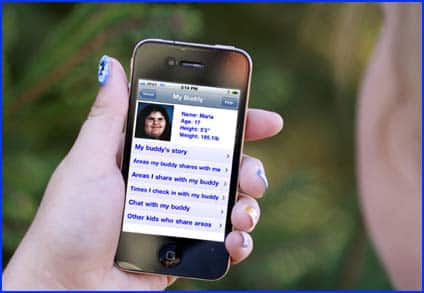
Since awareness of the childhood obesity epidemic has been raised, kids are kept track of more closely, and one result of that scrutiny is a rather jarring prediction. By 2020, American life expectancy is likely to be reduced by 13 years. In other words, if John Doe Senior lived to the ripe old age of 75, John Doe Junior might make it to 62.
That’s a large chunk of years to lose. One long-range result will be that today’s children may not live long enough to be effective grandparents. When the kids of this generation grow up, if they leave the scene prematurely, a whole future generation of kids will have to struggle to maturity with no grandmas and grandpas.
That concern and many others are reflected in the tagline of a recent story from Al Jazeera, which reads, “Will this generation of US children be the first to live shorter lives than their parents?” The Web page is based on a TV show titled “The US Obesity Threat,” and Dr. Pretlow is a guest, as well as Dr .S. Jay Olshansky, and Susan Levin of the Physicians Committee for Responsible Medicine.
Dr. Olshansky talks about how things changed drastically in the 1980s, outlining his own vision and interpretation of the “Perfect Storm” concept. He also points out that the acquisition of fat cells early in life makes it much more difficult to maintain a normal weight throughout life.
Dr. Pretlow is interviewed about the role of parents, for instance, the co-dependency that develops when a parent can’t figure out how to get affection in any other way, and buys it with large pizzas and sweet treats. He talks about the research he has done through the Weigh2Rock website, where children and teens reveal their secret struggles.
Of course, he outlines the case for recognizing food addiction as the major problem, and makes again the very important point that kids are not getting what they need. Nutritional education and advice about exercise are fine in their place, but the elephant in the room is the inability of kids to resist the harmful pseudo-foods with which they are surrounded. They experience cravings for highly palatable foods that are not only nutritionally bereft, but actively harmful. Their weight goes up and up, and what they need most is information and education on how to shake off those cravings.
Dr. Pretlow also speaks about the effectiveness of the “W8 Loss 2 Go” smartphone application, whose purpose is to give aid in dealing with those cravings.
The 35-minute video segment hits all the high points of the current childhood obesity debate. Bad food is easily accessible and takes no preparation, so busy people choose it over truly sustaining food. Schools have been cutting exercise programs. Susan Levin goes into the intricacies of government policy that is in conflict with itself, trying, for instance, to get people to eat more dairy products and fewer dairy products at the same time.
The issue of military readiness is also raised. There is mention of Michelle Obama’s Let’s Move! program and the Healthy, Hunger-Free Kids Act of 2010. New rules have gone into effect in schools, but there has been a backlash, not only from the grownups with political agendas, but from the kids who have boycotted their school cafeteria. There has been controversy over public service advertisements attempting to quell obesity.
Lot of great things are found on this page, which is almost a “one-stop shopping” experience of the various facets of the battle against childhood obesity. It contains other video clips that expand on some of the issues, and a plethora of links to helpful resources. A very scary animated graphic, the “Official US Obesity Rates Timeline,” illustrates the growth of obesity in the U.S. between 1985 and 2009. That alone should cause sweat to break out on America’s collective forehead.
Your responses and feedback are welcome!
Source: “The US obesity threat,” AlJazeera.com, 10/01/12

 FAQs and Media Requests:
FAQs and Media Requests: 












One Response